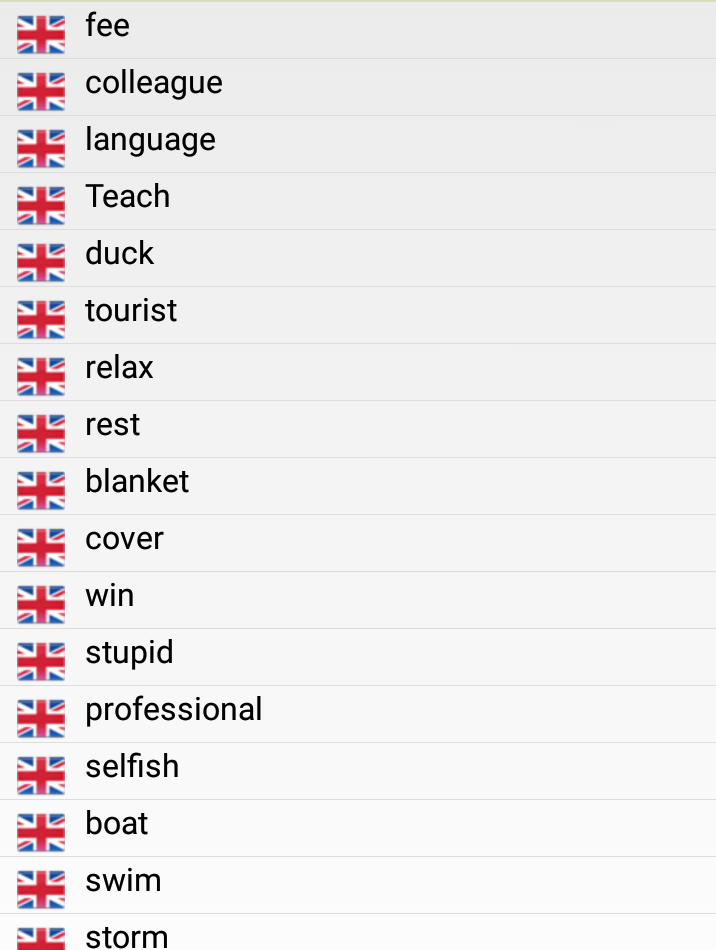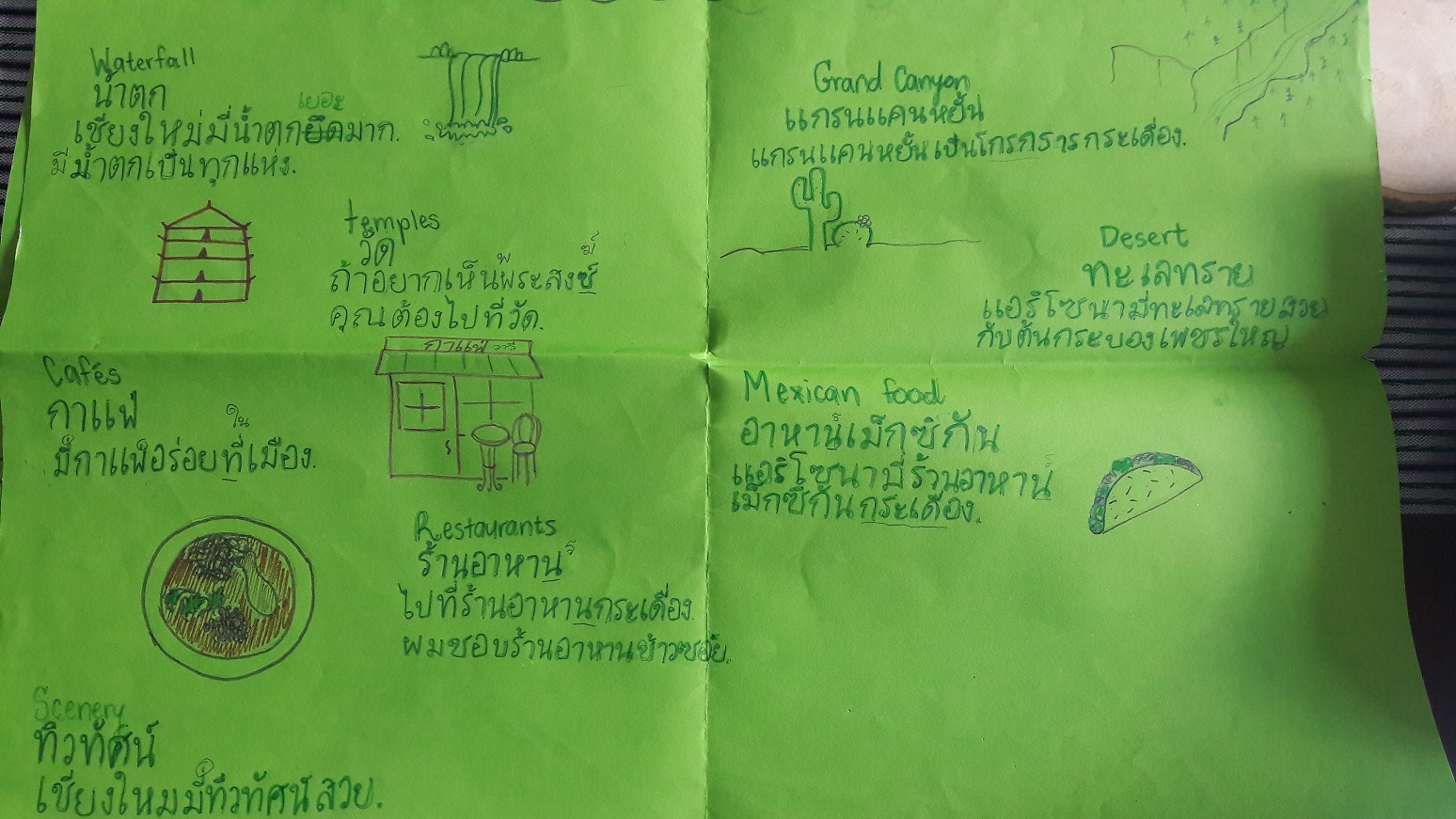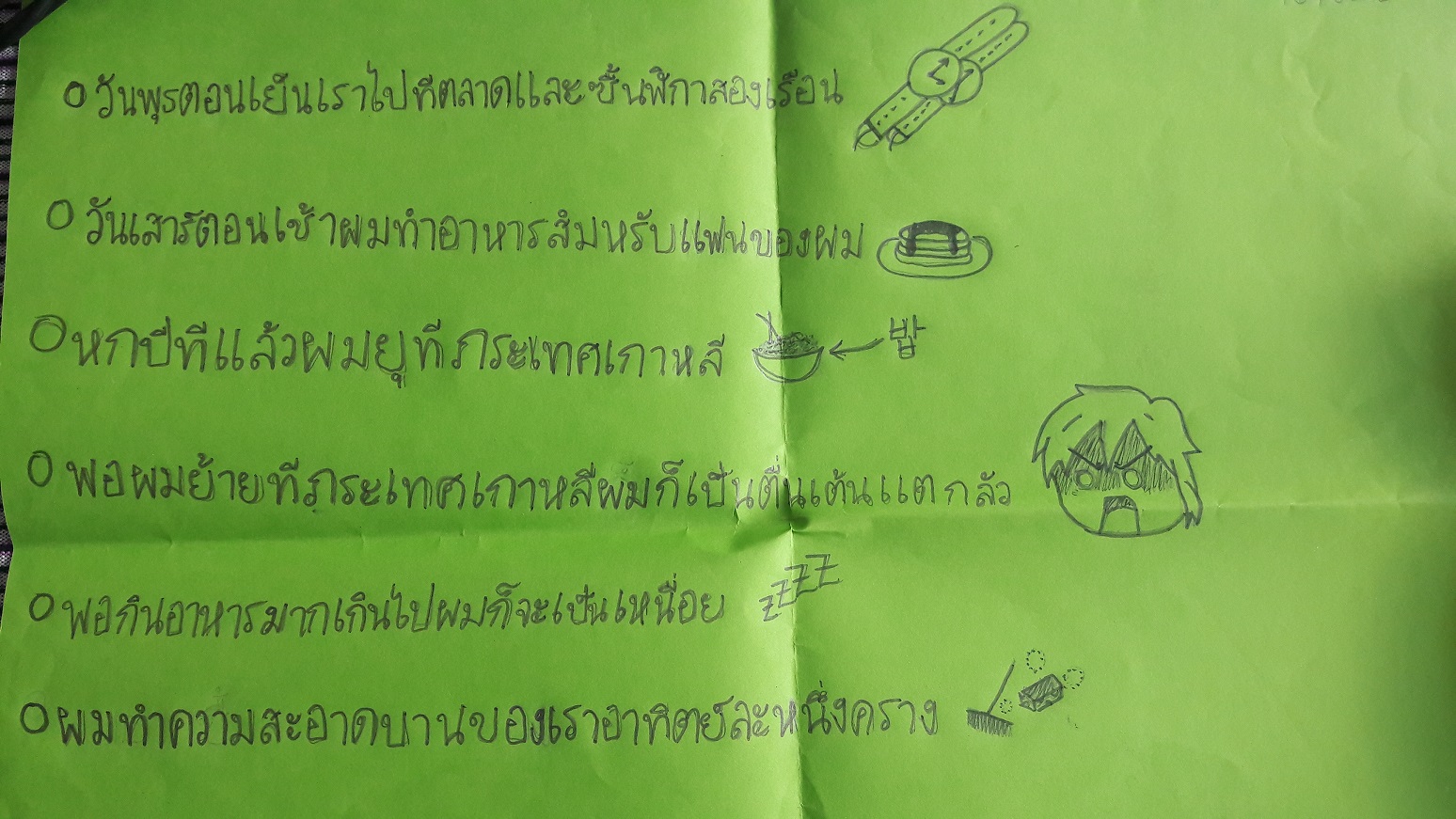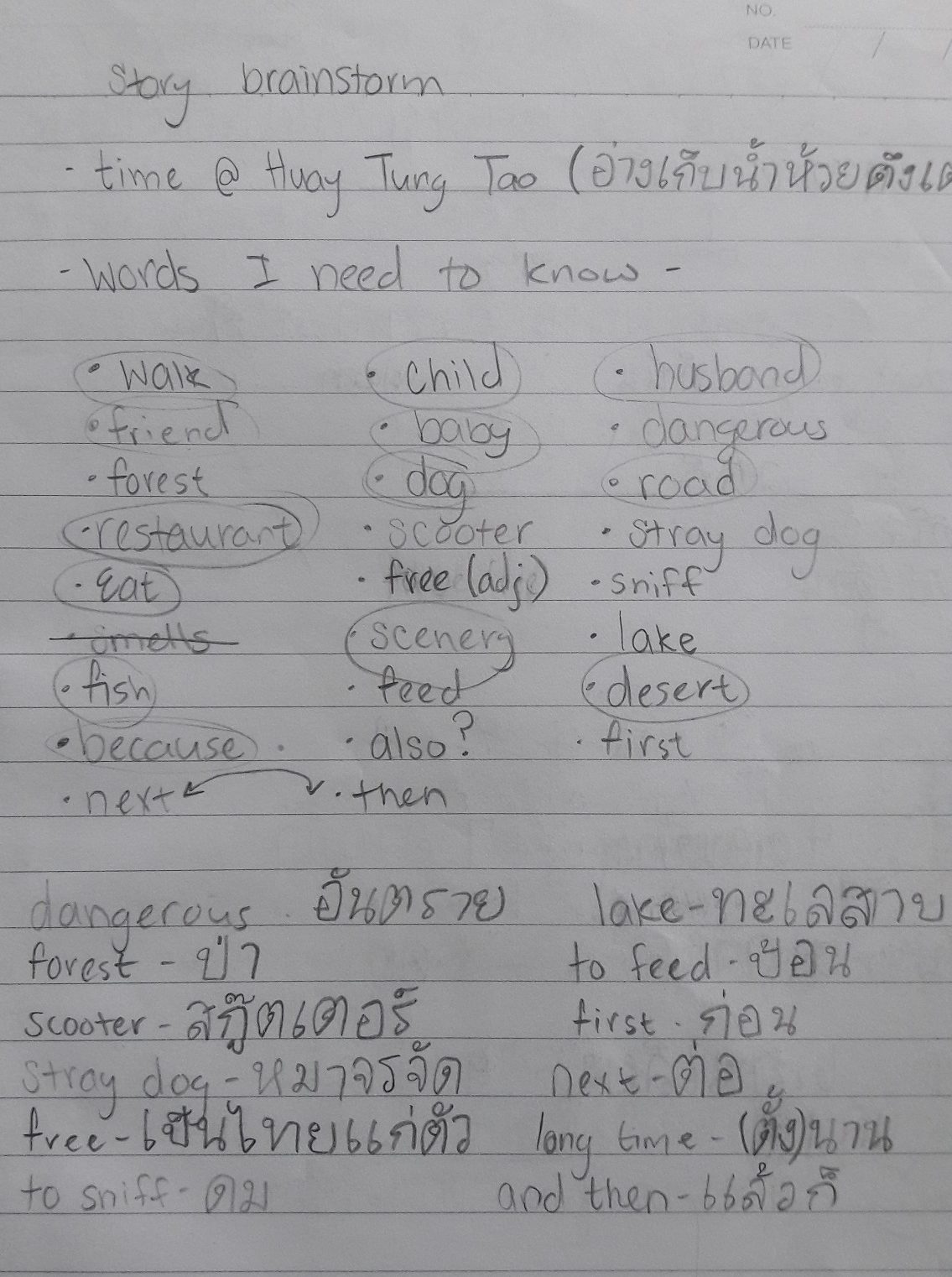My Experience as a Language Learner
My experience as a full time language learner and how it applies to teaching practice“For your homework, you will write a story about whatever you want and share it with your friends” said my Thai teacher at the end of the three hour long Thai class. I only understood this because he said “talk, friend, and write” in the same sentence. I had no idea what the word “share” was, but I figured out what he meant using context. My eyes widened and my jaw dropped. Ajaan (the Thai instructor) knows how uncomfortable I am speaking in front of my classmates, let alone making complex sentences to articulate a full story. To top it off, it was only my second day in Thai Five. I was previously in Thai Three, an introduction to reading and writing, for two days before I requested to move. Imagine writing and reciting -at, -ab, and -ad nonsense words for three hours straight. This was essentially what we were doing in Thai Three. I know for a fact that this would keep a six year old busy for approximately 3 and a half minutes. It was brutal, but I’m stubborn. Very stubborn. There was no way I was going back to that Thai Three room with my tail between my legs. There were destructive thoughts of dropping out; forfeiting the course fee and disappearing out of embarrassment. Then it hit me; why not apply some of the strategies I use with my students to my own language learning?
I only understood because he said
talk, friend, and write in the same sentence.
My Dictionary
I could not imagine being in this advanced Thai course without my dictionary app. To put it into perspective, I would go from 90% battery to about 30% in a matter of two hours. That’s how crucial a dictionary is to my learning. Simply knowing what one word was in a sentence dramatically changed my understanding and gave meaning to our discussions. Being able to freely utilize my dictionary at my own discretion helped me put together missing pieces of the Thai language puzzle.
Classroom application
Learning how to strategically use the dictionary was just as important as having it. If I looked up every unknown word that I heard or read, it would prevent me from focusing on other important skills like listening and speaking. However, teachers should also provide opportunities for students to make connections with vocabulary using a mixture of scaffolds such as photos or video. These connections can help students infer meaning of words as opposed to looking them up.
Visuals
It felt like a breath of fresh air when my teacher used the occasional slideshow or Youtube video to elaborate on the topic we were studying. It was a different version of input than the typical stand – and – lecture format. I was able to use photographs to ask questions, gain clarification, or reference vocabulary words that I heard. There were days where most of the interactions I had with Thai were all done orally in lecture, and those days were exhausting.
It felt like a breath of fresh air when my teacher
connected the occasional slideshow or Youtube video
Classroom application
Photos and videos are crucial to any classroom regardless of language. Having multiple sources of input decreases the cognitive burden of learning, well, anything! Relying on only one source of input (lectures, for instance) can be daunting for the language learner. Embedding videos and photos throughout classroom lessons can help break up the learning process. Visuals can remove that extra step for the language learner has to take to understand content.
Being Creative
“You will share your story with the other students on Monday”, Ajaan explained as he handed out a blank double sided sheet of lined paper. As much as I appreciated the open-ended format of the assignment, a blank piece of lined paper simply did not inspire me to write. I thought to myself, “What the heck am I going to write about that fills two whole pages?”. I was already getting anxious in class because I was still learning some basic vocabulary to express thoughts and ideas. However, I refused to let a piece of lined paper get the best of me. I took a deep breath and asked myself, “What do I need to do this writing assignment?”. Having a more assets based mindset helped me problem solve. I decided to attach pictures of a recent trip to the lake with my husband to accompany my text. Not only did the photos help by providing images to reference, but they gave me agency to make connections to a personal experience.
Having a more assets based mindset helped me problem solve.
Adding sketches and cartoons helped me keep new vocabulary words in long term memory (plus it was fun!).
Classroom application
Connecting personal experiences to my learning helped me support my own thinking as a student. Some students in my class had the language to come up with a fictional narrative with characters and a developed plot. I, on the other hand, needed some visual support to help scaffold language use. My particular story involved me and my husband going to a lake on a picnic, so I was able to articulate these ideas through my photographs rather than create something from scratch. Providing students agency to tackle reading and writing assignments in ways that are meaningful to them (and supporting them when needed) can make a daunting language task much more manageable while still addressing curriculum and standards.
Connecting personal experiences to my
learning helped me support my own thinking
Graphic Organizers
When starting a complex writing assignment like the one I mentioned above, graphic organizers were a lifesaver. We weren’t provided organizers during class, so I went through my personal ELL toolbox to find my own. Organizing my thoughts in English first helped me understand the pieces I needed in Thai. I wrote out all of the verbs, nouns, and grammatical structures that I needed in English, circled the ones I knew how to articulate in Thai, and did my best to translate the rest. Afterwards, I printed photos of our trip and organized them chronologically. Once I mapped out the story, I started writing with the words I gathered beforehand as my word bank. This helped me organize my thoughts as well as provide scaffolding to meet my language needs. It hit that “sweet spot” of difficulty level as well; I was able to use familiar language and I learned new language in the process.
Classroom application
When addressing any standard, providing strategic access to graphic organizers is a way to make content more accessible to students. Using students’ first language takes this a step further. Language learners are more than likely thinking in their first language, so educators can activate the knowledge they have of the topic in their first language to start developing the content in English.
Takeaways
When presented with a challenging task, it’s easy to delve into a self destructive mindset or feel defeated. Many of our students face these challenges every day, and the added layer of the English language can make it even more difficult. During this Thai course, I was filled with empathy for my own students. Educators focus so much on content that it’s easy to forget the emotional energy required to learn another language. Scaffolding my own learning helped me realize how important it is in providing access to content, but also making language learning manageable and more enjoyable.





Excellent strategies, Justin. Yes, learning a new language is a lot of work. It can be exhausting. Your scaffolds really help! Good luck! Thanks for sharing.
Thank you!
Welcome, Justin to the blogging world! What a GREAT way to contribute to the filed by sharing your personal experience of learning Thai as an adult. These reflections, I bet, make you a better teacher of language because you know the pain, the embarrassment, the fear. With this knowledge, you become a more empathetic teacher who creates a welcoming environment for ELs. Your students are so lucky to have you!
I can’t wait for more content from you!
P.S. You are a great emoji artists, and your Thai handwriting is ABSOLUTELY beautiful. It would rival that of native Thais.
Thank you so much, Tan! You were a HUGE inspiration to starting my own site to document my experiences. Can’t wait to collaborate with you even more in the future x
Your story provides context for several aspects we often talk about in educational theory: social-emotional aspects of learning, scaffolding, graphic organizers, growth mindset, and the use of dictionaries and L1 (native language) support. What I find most helpful about this post is how these elements are applied to your own experience as a language learner in addition to the application you make to your own teaching. It’s one thing to read and study about them as an educator, but your description of how they helped you be successful in your Thai language class brings the concepts to life in a memorable fashion. Khob khun kaa!
Thank you so much for your kind words and connections to your personal experiences. Sometimes we need to put ourselves in situations where we can learn through experience. It’s helped me out so much in my teaching!
Keep up the hard work. It’ll make you empathize with your students and others as well as making you a better smarter person.
And you’ll never get there! But that’s okay.
What a great start to your blog, too!
Thanks so much! Seriously – learning Thai has helped me develop a better understand of my students’ needs and what they’re going through on their language journey. It’s also been a helpful tool to bring up during parent meetings – parents are much more at ease when I can share how I relate to the challenges that their kiddos are facing.
Great session today on FlipGrid!!! You shared awesome new ideas! Thank you!!!
Keep up the good work, Justin. You are doing great. I anticipate this blog and your wisdom can be helpful to a lot of students and teachers.